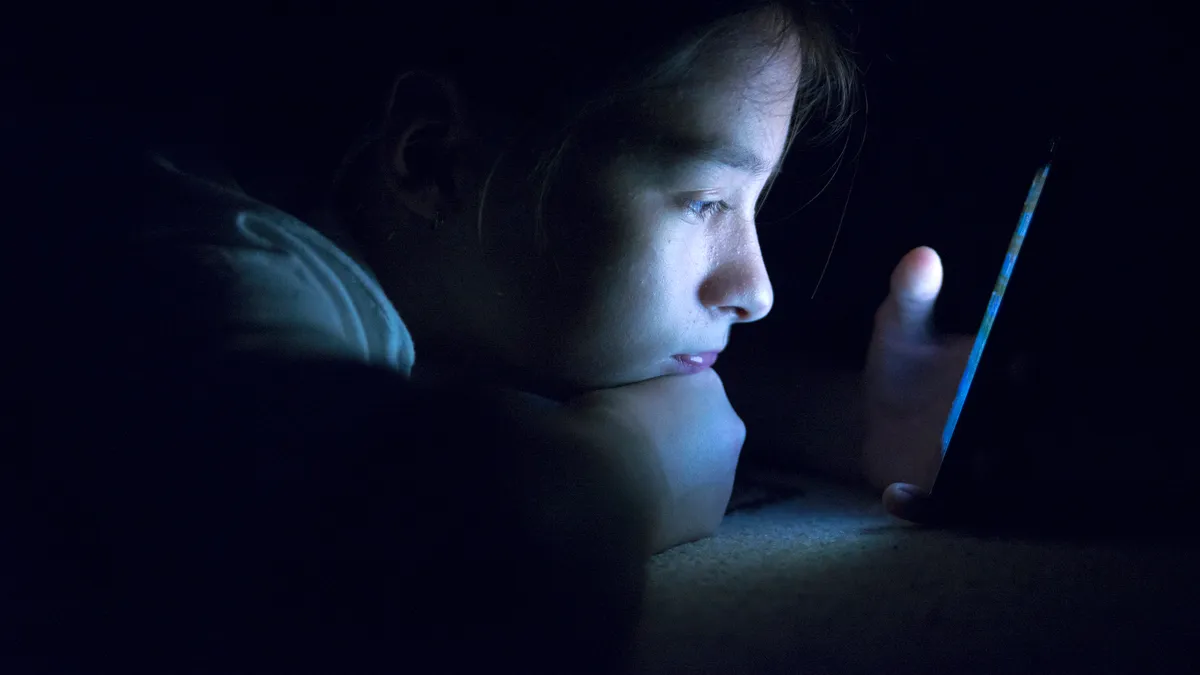Dive Brief:
- A comprehensive effort from the federal government and businesses is needed to reduce teen mental health risks from social media, according to recommendations released Wednesday from the National Academies of Sciences, Engineering, and Medicine, a private nonprofit that provides independent advice for complex policy challenges.
- The recommendations include developing new industry standards for design, transparency and data use. Standards for social media operations and platform design would allow for better transparency and monitoring by the public and the Federal Trade Commission, the National Academies report said.
- Schools play a large role in how students are introduced to and use electronic devices and social media, and they should therefore take risk reduction approaches such as building comprehensive media literacy programs that include teacher training, the report said.
Dive Insight:
Some aspects of adolescent social media use is cause for concern, such as exposure to harmful or inaccurate information. But the National Academies' 251-page report also emphasizes some benefits such as connections to communities for marginalized youth and the "opportunity for fun and joy for the vast majority of users."
“There is much we still don’t know, but our report lays out a clear path forward for both pursuing the biggest unanswered questions about youth health and social media, and taking steps that can minimize the risk to young people using social media now,” said Sandro Galea, chair of the National Academies' Committee on the Impact of Social Media on Adolescent Health, in a statement.
The report calls on the U.S. Department of Education to highlight the importance of digital media literacy with the state boards of education setting K-12 standards for those lessons. The report also suggests that the Council for the Accreditation of Educator Preparation set requirements for digital media literacy education for student teachers, as well as ongoing professional development for veteran teachers.
Four states — California, Delaware, New Jersey and Texas — have enacted K-12 media literacy instruction requirements to help students locate credible online sources and strengthen their critical thinking skills.
Other proactive steps school districts and states are taking include banning or limiting social media use and the use of personal devices during the school day. States like Florida and Montana have attempted to block the use of TikTok specifically.
More than three-fourths of school districts nationally prohibited nonacademic use of cell phones during school hours in the 2019-20 school year, according to the National Center for Education Statistics. But 97% of 11- to 17-year-olds use their phones during the school day, mostly for social media, YouTube and gaming, according to a Common Sense Media analysis from September of 200 students' smartphone data.
School systems have also been on the defense as a rise in student mental health challenges have surfaced over the past few years. Dozens of school districts have joined a lawsuit with other plaintiffs against Meta, Snapchat, TikTok and YouTube, arguing their apps are harmful to student mental health and have adversely affected school operations and resources.
Still, others promote a more balanced approach by encouraging positive social media use for teens while preventing negative behaviors.
"Social media isn't inherently good or bad, and that it really depends on what you're doing, what you're seeing, what are your strengths and vulnerabilities?" said Linda Charmaraman, director of the Youth, Media and Wellbeing Lab at Wellesley Centers for Women, who spoke during a Tuesday webinar hosted by the University of Southern California's Annenberg Center for Health Journalism.











